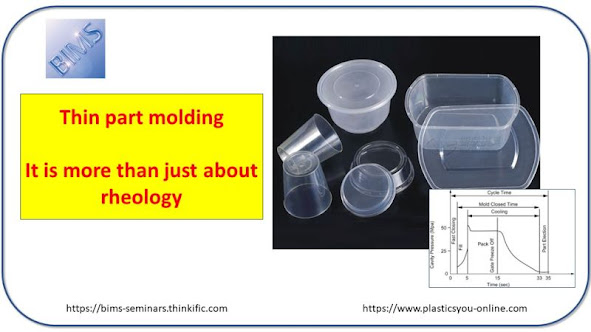Today's KNOWLEDGE Share
I recently heard of a customer observing huge differences in pressure to fill from two PP batches with checked identical viscosity data from capillary tests.
When molding thin parts, the pressure drop becomes overwhelmingly dominated by the actual "frozen skin" thickness that develops rapidly during filling.
With a thickness in the 100's of microns range the effective available thickness for flow will dramatically decrease in the case of thin parts.
The pressure drop in a plate scales essentially with one over the cube of the thickness, so a tiny difference in the frozen layer makes a huge difference in pressure to fill !
In PP we see a very strong effect of nucleation, both induced by additives/pigments or due to flow ( Flow Induced nucleation). The tremendous amount of shear in the outer layers of the flow in Injection Molding will lead to a frozen layer thickness that varies a lot with molecular architecture (Mw in particular).
This could be a major issue in recycled PP where "same viscosity" batches may actually have variable amounts of long chain fraction, key for nucleation and therefore crystallization kinetics.
source:Vito leo





No comments:
Post a Comment